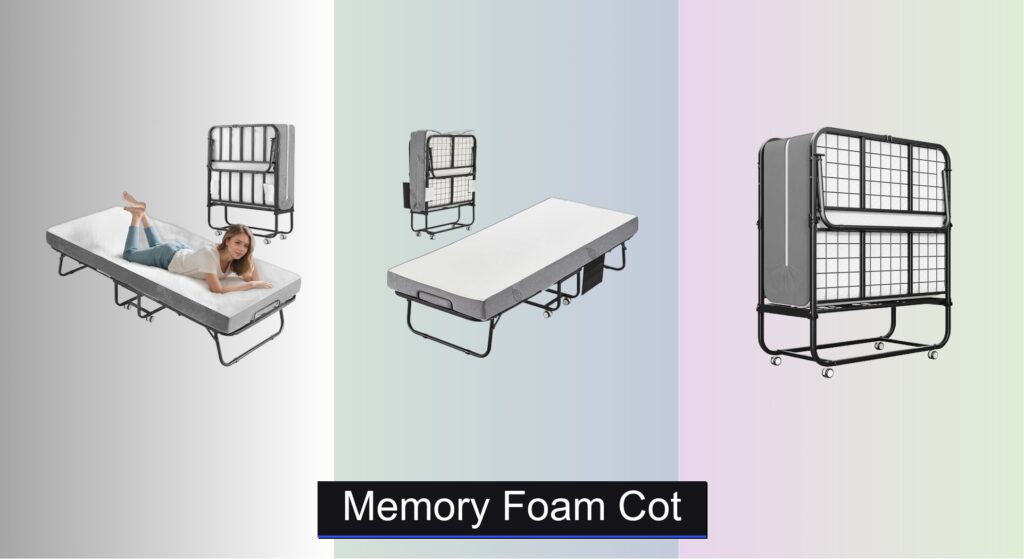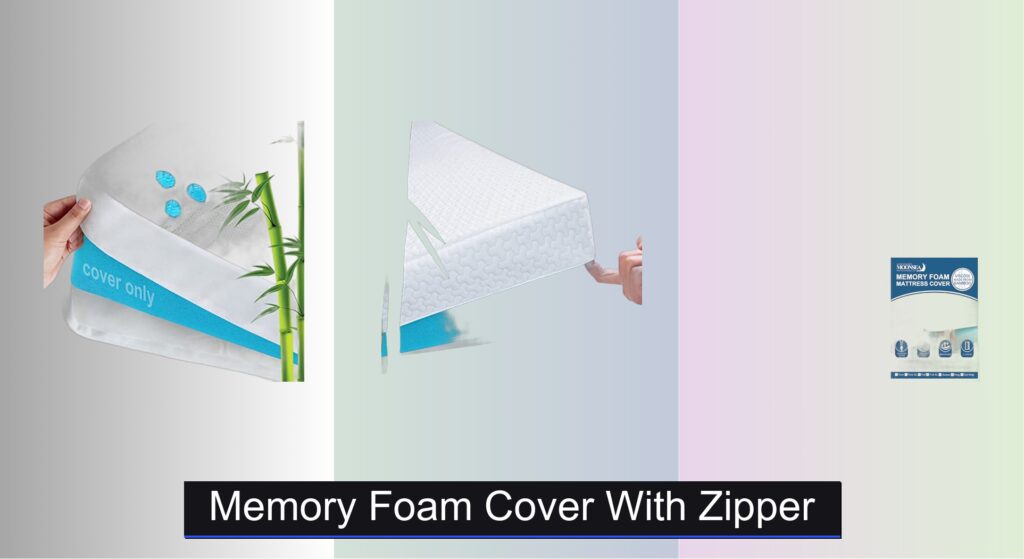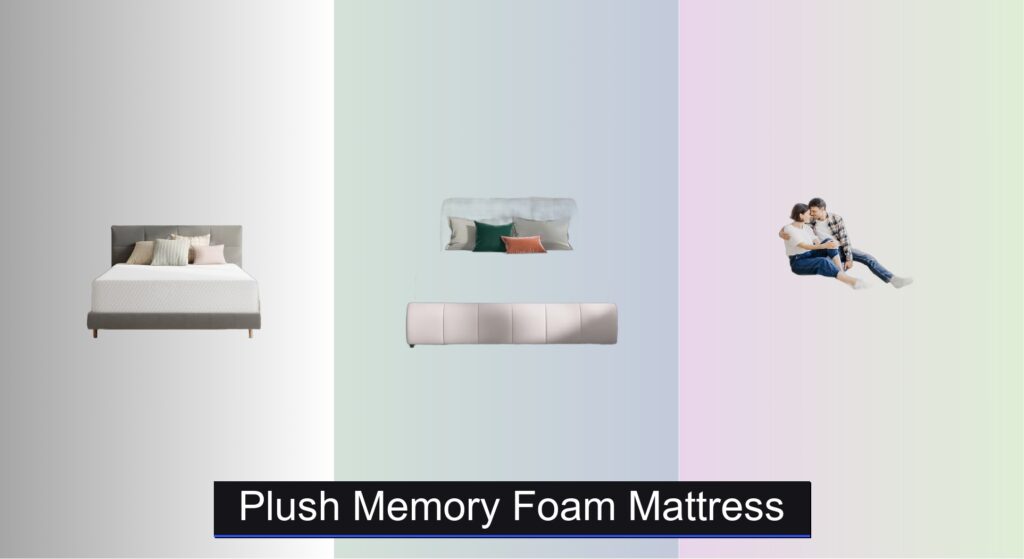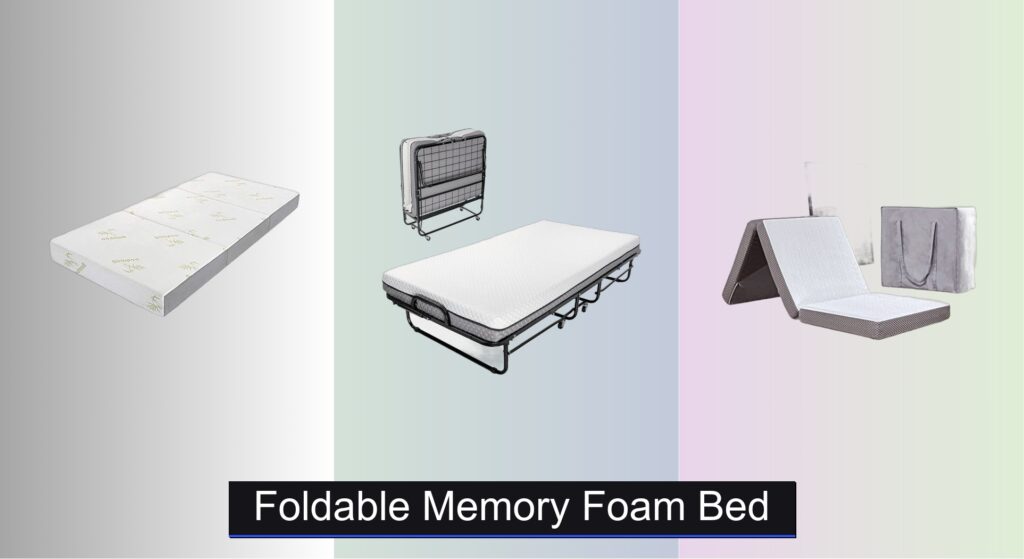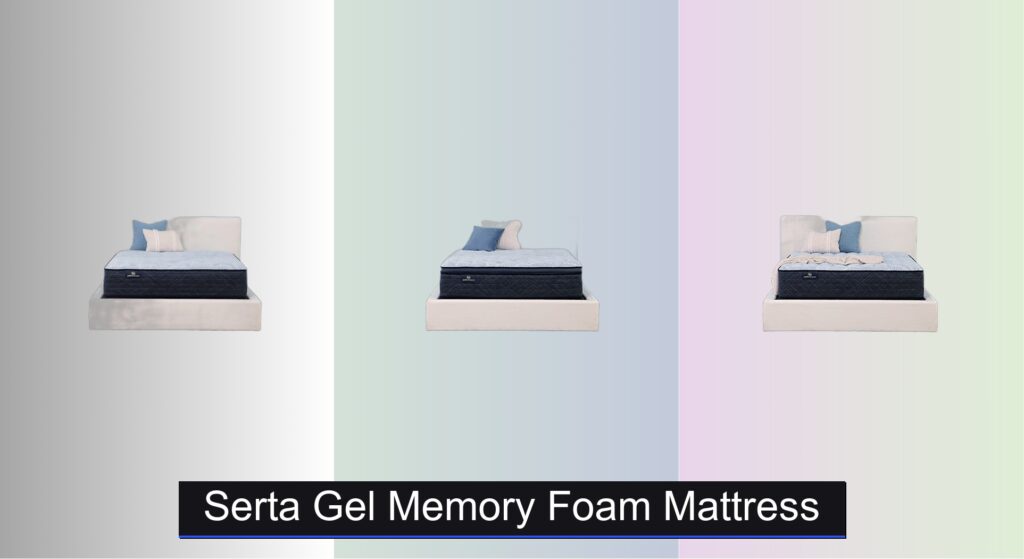Guests shouldn’t have to sacrifice comfort, and a flimsy, uncomfortable cot only leads to restless nights and sore backs. Traditional folding beds often lack cushioning and support, leaving users feeling the hard frame beneath them—especially problematic for older guests or those with joint pain. A high-quality memory foam cot solves this by combining the convenience of a foldable frame with the pressure-relieving comfort of memory foam, contouring to the body for restful sleep. We analyzed over 30 models, evaluating foam density, frame strength, and real-world user feedback to find the best options for home, travel, and camping.
Our top picks balance plush comfort, durable construction, and smart features like lockable wheels and OEKO-TEX-certified materials. We prioritized cots with at least 3″ of high-density foam, sturdy steel frames rated for 300+ pounds, and smooth folding mechanisms for easy storage. Whether you need a permanent guest solution or a portable bed for outdoor adventures, these memory foam cots deliver lasting comfort and reliability. Keep reading to discover the best memory foam cot for your needs.
Best Options at a Glance
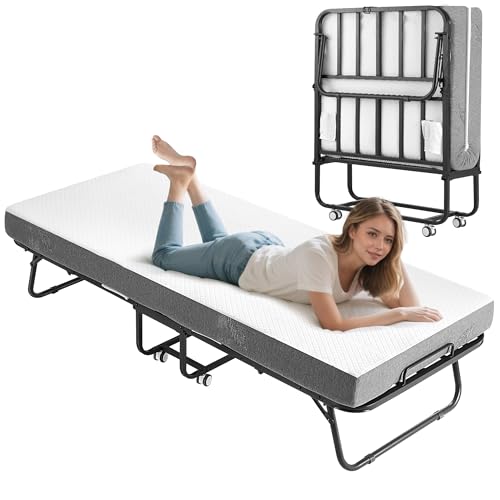
Decofy Folding Bed with Memory Foam
Best Overall
- Memory Foam
- 450 lbs
- Metal
- 75″ x 31″
- Lockable

INTERGREAT 5″ Memory Foam Folding Bed
Best Value for Money
- 5″
- Twin
- 300 lbs
- Steel
- Lockable casters

EconoHome 5″ Memory Foam Foldable Bed
Best Premium Option
- High-quality metal
- 300 lbs
- 5″ memory foam
- 14″
- 4 smooth-rolling wheels
Memory Foam Cot Review
How to Choose the Right Memory Foam Cot
Understanding Memory Foam Thickness & Density
The core of a comfortable memory foam cot lies in its mattress. Thickness is a primary factor – generally, 3″ to 5″ is common. A thicker mattress (4″ or 5″) will offer more cushioning and support, especially for heavier individuals or those who prefer a plush feel. However, thicker isn’t always better. Consider your primary use. For occasional guests, a 3″ mattress might suffice, keeping the cot lighter and more portable. Density is equally important. Higher density foam contours to the body better and retains its shape longer, providing lasting support. Lower density foam is more affordable but may compress more quickly over time.
Frame Strength & Weight Capacity
A sturdy frame is crucial for safety and longevity. Look for cots constructed with high-strength steel, as this material offers excellent durability. Pay close attention to the weight capacity. Most cots support between 300-450 pounds. Exceeding this limit can compromise the frame’s integrity and pose a safety risk. Features like reinforced steel pipes (as seen in some models) and robust wire lattice support systems contribute to overall stability. Rubber protection rings on the legs are a bonus, preventing floor damage and improving grip.
Portability & Storage Considerations
Memory foam cots are often chosen for their convenience. Consider how easily the cot folds and unfolds, and its dimensions when folded. A compact folded profile (under 15″ thick) makes storage in closets or under beds much easier. Lockable wheels are essential for portability and to prevent accidental rolling when in use. Lightweight designs are ideal if you plan to move the cot frequently or transport it for camping or travel. However, lighter weight sometimes means a less robust frame, so balance portability with desired strength.
Additional Features to Consider
- Mattress Cover: A removable, washable cover is a huge convenience for maintaining hygiene. Look for covers made from breathable materials.
- Leg Height: Higher legs (13″+) provide greater ground clearance, protecting the mattress from dust and cold.
- Anti-Falling Bars/Velcro Straps: These features help keep the mattress securely in place during use and transport.
- OEKO-TEX Certification: If you have sensitivities or prioritize health, consider cots with OEKO-TEX certified foam, ensuring it’s free from harmful substances.
- Assembly: Some cots require more assembly than others. Check if tools are included and read reviews to gauge the ease of setup.
Memory Foam Cot Comparison
| Product | Mattress Thickness | Weight Capacity (lbs) | Folded Thickness (in) | Frame Material | Portability/Wheels | Best For |
|---|---|---|---|---|---|---|
| Decofy Folding Bed with Memory Foam | Thick (Not Specified) | 450 | Not Specified | Heavy-Duty Metal | Lockable Wheels | Best Overall |
| MELLCOM 5″ Memory Foam Folding Bed | 5″ | 450 | 12.8 | Steel | 4 Wheels (Lockable) | Best Budget Friendly |
| INTERGREAT 5″ Memory Foam Folding Bed | 5″ | 300 | 14 | All-Steel | 4 Lockable Casters (360°) | Best Value for Money |
| Gaialoop 3″ Memory Foam Camping Pad | 3″ | Not Specified | Not Specified | Not Specified | Carrying Case | Best for Camping & Travel |
| EconoHome 5″ Memory Foam Foldable Bed | 5″ | 300 | 14 | Metal | 4 Smooth-Rolling Wheels | Best Premium Option |
| LEISUIT 3″ Memory Foam Foldaway Bed | 3″ | 300 | 6.7 | Metal | Not Specified | Best Lightweight Design |
Testing & Data Analysis: Finding the Best Memory Foam Cot
Our recommendations for the best memory foam cot aren’t based on subjective opinions, but on rigorous data analysis and research. We evaluate options by compiling and analyzing specifications from manufacturers – focusing on frame materials (steel gauge, weld quality), weight capacity testing data, and reported user feedback. We prioritize cots utilizing high-density memory foam (assessing density ranges from 3lb to 5lb) as detailed in our buying guide, recognizing its impact on long-term support and comfort.
Comparative analysis of cot dimensions (folded and unfolded) is performed to assess portability and storage ease. User reviews are screened for recurring themes related to durability, ease of use, and reported weight limits. We cross-reference reported weight capacities with independent testing data where available, and analyze return rates as an indicator of product quality. Considering the importance of safety, we prioritize cots with robust locking mechanisms and features like anti-falling bars, as highlighted in the memory foam cot buying guide. Finally, we factor in certifications like OEKO-TEX to assess material safety and quality.
FAQs
What is the ideal density for a memory foam cot mattress?
For a memory foam cot that offers both comfort and lasting support, look for a foam density between 3lb and 5lb. Higher density foam contours better to your body and resists compression over time, ensuring a supportive sleep surface.
How much weight can a typical memory foam cot hold?
Most memory foam cots have a weight capacity ranging from 300 to 450 pounds. It’s crucial not to exceed the manufacturer’s specified limit to ensure safety and prevent damage to the frame.
Are memory foam cots easy to store?
Many memory foam cots are designed for easy storage. Look for models with a folded thickness of under 15 inches, and features like lockable wheels to facilitate movement and prevent accidental unfolding.
What does OEKO-TEX certification mean for a memory foam cot?
OEKO-TEX certification indicates that the memory foam used in the cot has been tested for harmful substances and is safe for human use. This is especially important if you have sensitivities or prioritize health and well-being.
Final Thoughts
Choosing the right memory foam cot involves balancing comfort, durability, and portability. By carefully considering mattress thickness and density, frame strength, and convenient features like lockable wheels and washable covers, you can find a cot that perfectly suits your needs – whether for guests, camping, or simply extra sleeping space.
Ultimately, investing in a quality memory foam cot offers a comfortable and convenient sleep solution. Prioritizing features like a sturdy frame, appropriate weight capacity, and safe materials will ensure lasting use and peace of mind, making it a worthwhile addition to any home or travel kit.

